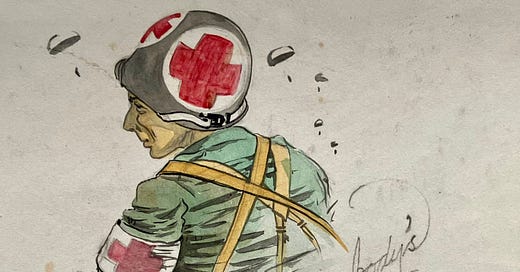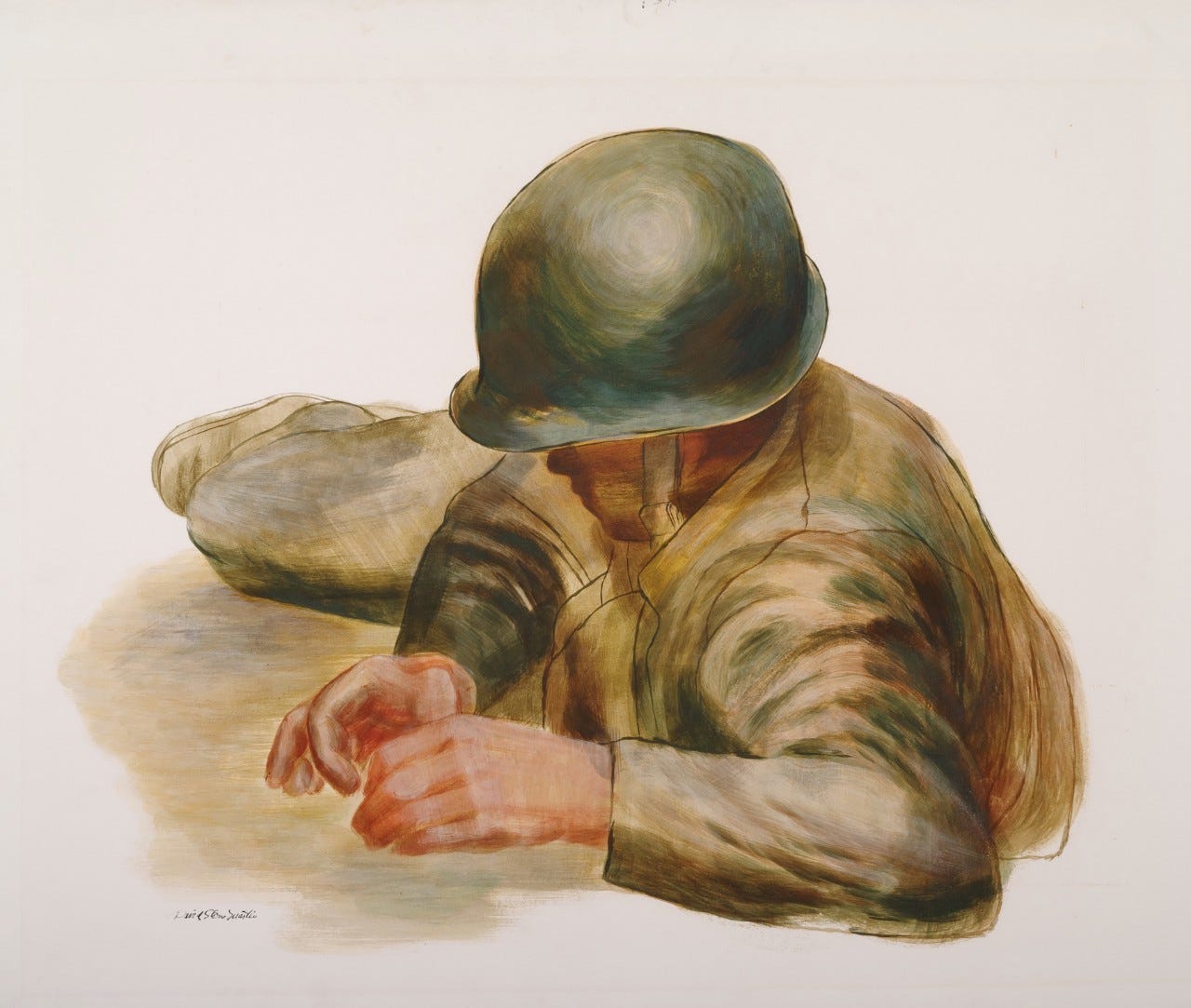As often happened with humanity when in need of a great innovation or invention, it was found several experimenters working at widely separated points made the same discovery at almost exactly the same moment. — James Jones, The Thin Red Line
It was around August 1943 when Major General Joe Swing returned from the Mediterranean. An old West Point classmate of Dwight Eisenhower, Swing had been acting as his airborne planner and advisor for Sicily. Shortly after his return, he met Major General William Miley, commanding the 17th Airborne Division. Miley, Swing, and Ridgway had steered the 82nd together while it was morphing into an airborne division. Swing brought with him the news of the 82nd Airborne’s performance in Sicily. According to Miley’s letter to Ridgway dated August 7, Swing told “glowing details of the conduct” of the division.
While in the USA Swing was giving the news to Miley, in the Mediterranean Ridgway was writing his vision for the future. Two months later, Miley lamented to Major General William Lee that “it seems as though Matt [Ridgway] does not believe that an airborne division can be used in its primary role due to his experiences in Sicily, and has convinced Eisenhower of this fact.”
This was not true, but it seemed Miley did not have a way of knowing. In reality, Ridgway only advocated for a temporary cessation of airborne operations until they could be properly carried out. The principle missions were sound, but the employment of the unit was the issue. (The term employment had specific meaning to them, the subject of next week’s post.) In real terms for Ridgway, this simply meant not conducting another airborne mission until the planes were in theater to allow the 82nd to be employed the way it was designed—as a division. These discussions and conversations seemingly did not reach Miley at Camp Mackall.
On January 24, 1944, Major General Miley wrote his old friend Major Ben Vandervoort, overseas with the 82nd, asking “please write and give me the dope from over there.” The 17th had just finished their maneuvers (described in Part 1) when he wrote Vandervoort. Miley’s division experienced in maneuvers similar problems as Vandervoort’s had in Sicily and Italy.

In the realm of casualty evacuation, Captain Brucer witnessed in the 17th Airborne the same shortfalls in transportation and personnel that had bedeviled the 82nd overseas. Captain Brucer’s recommendations from his time as maneuver surgeon were prescient. Some were intuitive fixes and ones the 82nd also came up with independently. But less intuitive, at least to early designers of the airborne organization, was the holding ward that Brucer suggested.
It is apparent that one medical platoon of an airborne medical company acting as a clearing station is not equipped to carry on both its divisional functions and the additional duties of an airhead clearing station.
Provision must be made for a medical instillation at the airhead to accomplish the following duties:
(1) Evacuate patients from the treatment stations of division medical service to air evacuation transport planes
(2) Provide medical care for operations personnel at the airhead...
(3) Provide medical care for casualties incurred during air landings and take-offs.
(4) Act as a “holding” station and triage for personnel awaiting air evacuation.
Something of this nature was only intuitive when the problem was laid bare by large scale maneuvers, where all elements of the division are stressed by working together. It is where wide seams in the organization become apparent.
The full effectiveness of infantry batteries and accompanying guns cannot be developed merely through a high state of individual knowledge and training on the part of the infantry and artillery; team play is necessary which can only be attained by the two arms actually working together. This combined training should be acquired in the training area rather than on the battlefield.
— Major Leslie McNair, The Field Artillery Journal, 19211
In the aftermath of the January maneuvers, the 244th Airborne Medical Company began to reorganize itself. It formed motorized collection detachments and organized all the treatment sections, which had been dispersed, into a centralized clearing station for the division, also fully motorized. This was the exact same solution the 82nd Airborne Division’s 307th Airborne Medical Company would adopt in Europe.
The upcoming maneuvers in Tennessee between February and March 1944 were the perfect place for the 17th to test these changes designed to address Captain Brucer’s concerns. They, indeed, proved themselves—as they would for the 82nd Airborne Division in Normandy.
One thing the 82nd was still missing was a complete staff ward, along the lines of those recommended by Captain Brucer six months earlier. For the 82nd Airborne, the idea would fully develop in Operation Market Garden, when they were augmented by two auxiliary surgical teams and a detachment of the 50th Field Hospital (all given glider training). It gave them a completely self-sustaining medical apparatus behind German lines. The organization once again proved itself.
A surgeon of the 17th Airborne Division came onto the Continent as an observer while the 82nd was in action. When their own medical company jumped across the Rhine in the March 1945 airborne mission VARSITY, they operated on similar lines. Operation VARSITY went down in history, according to Major General James Gavin, as the “highest state of airborne development.”2 It was a natural culmination of everything that had been learned about (airborne) division operations in the preceding two years. Along two disparate tracks that knowledge was gained. In combat by the 82nd, and in training by the 17th. In VARSITY they both came together to make the mission a success. It’s no wonder that Major General Gavin felt that the airborne division was the smallest unit which could provide comprehensive and thorough training. It was a large part of his argument for retaining the airborne division in the new peacetime Army.
Next week on Ridgway’s Notebook:
“Miley’s Notes.” You won’t want to miss this one!
As a full general, McNair would go on to lead the Army Ground Forces in WWII.
Gavin, J.M. Airborne Warfare (1947). At the time, Gavin was commanding the 82nd.







